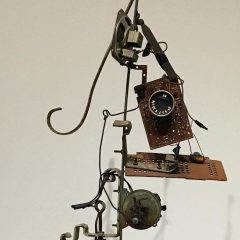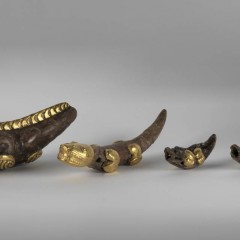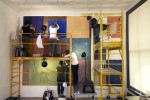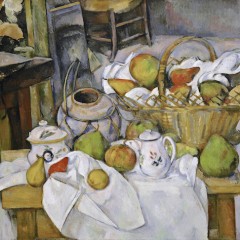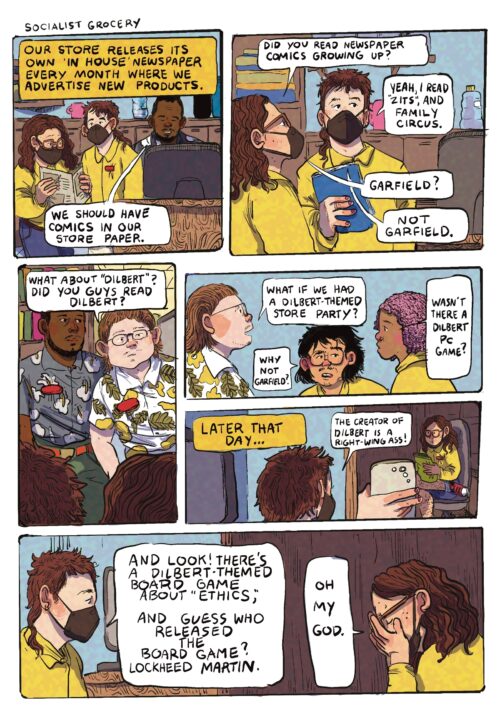Before they hit the scan button to digitally capture Ben Franklin’s 1759 petition to King George II, the Historical Society of Pennsylvania conservators go over the document to scrub away the centuries-old soot. They use a soot sponge (vulcanized rubber) or crumbled bits of white eraser to do this dry cleaning. If there’s a stain they may need to soak the document in de-ionized water, which removes the acidity in a wet cleaning. But at no time do they wear those iconic white cotton gloves, signifier of “be careful when touching this precious object,” because with gloves on, you become a little clumsy, and well, things can happen.
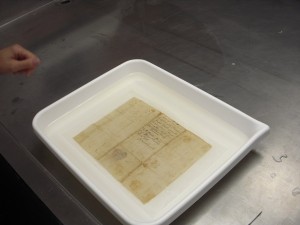
I made a trip to the HSP last month, which is where I got this great information first-hand while touring the conservation lab with Tara O’Brien, director of conservation, Laurie Cielo, director of programs and communications and Rachel Moloshok, director of HSP’s new “Preserving American Freedom” project.
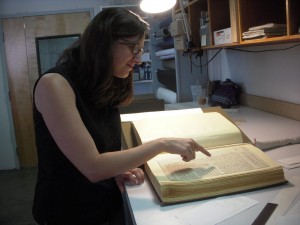
My trip was triggered by “Preserving American Freedom,” a new project in which 50 freedom-related documents are being conserved and then digitally scanned to go online into the HSP digital library. I was incredulous that these historical documents (some from pre-revolutionary war times) hadn’t been scanned already. But Cielo put the project in context, explaining that HSP has 21 million items in the collection (all housed in vaults in their building)–a mountain of work to scan! The Society began a digital library two years ago, and, project by project, they continue to increase the size of their online archive. Currently they have 52,000 images online.
The digital library
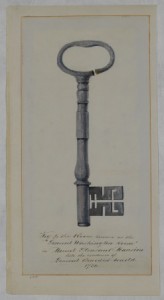
The digital library is laid out nicely, with an alphabetical list so if you know you want something about George Washington you can easily find it in the Ws. The items are scanned at high resolution and are available online with a great zoom function so you can read inscriptions and see plenty of details. And you can purchase a digital print of a document, should you want one.
After stumbling around the alphabetical listing (its a huge amount of information) I decided I’d look at Washington’s documents. I found one that appealed to me — a watercolor painting of a key to “General Washington’s room” in the Benedict Arnold mansion, 3800 Mt. Pleasant Drive, a painting by David J. Kennedy, 1780. The key is a documentary depiction down to the break in the round metal handle at the top. It’s a key that saw a lot of use, and with the Benedict Arnold connection, it brings up lots of history without even asking you to read.
Preserving American Freedom
Rachel Moloshok, director of the Preserving American Freedom project, is working on scanning 50 freedom-related documents. She was flummoxed at first on how to pick 50 documents that adhered to a broad definition of freedom (“Freedom isn’t an entity it’s a struggle, more of a verb than a noun,” she said.) But after consulting with HSP’s librarians she gathered her documents (and one actual object), that range in date from 1655 to the late 1970s.
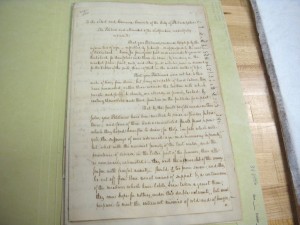
The documents deal with a variety of subjects within the category of freedom. There are historical freedoms such as William Penn’s deed with the Delaware Indians from 1682; and human freedoms — a newspaper advertisement for the sale of slaves and servants from 1738. John Dickinson’s Draft for the Articles of Confederation (1776) is in the 50; as is a huckster’s petition from 1805 in which women street vendors (hucksters) who were old and disabled petitioned the Philadelphia City Council for financial relief.
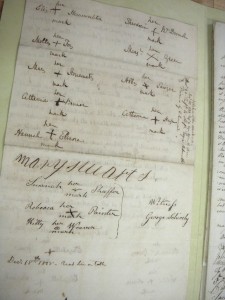
Also in the collection, documents from the Underground Railroad; a hand-written note by Susan B. Anthony (1874), the constitution of the National Woman Suffrage Asociation, and from more recent times, Dr. John Fryer’s speech to the American Psychological Association, 1972, which was instrumental in declassifying homosexuality as a disease.
Moloshok said the documents will be transcribed and annotated with links to historical information that will give the context and history of the item. Eric Foner, who is an American Freedom scholar, is one of several scholars who will be writing commentaries.
The conservation lab
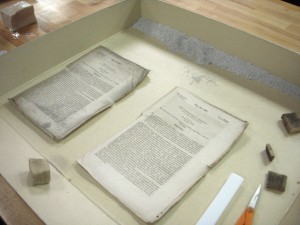
Back in the conservation lab, I saw the petition on behalf of the women hucksters. Moloshok pointed out that only one woman could sign her name. The others marked their assent with an “x.” I saw an abolitionist society document in the de-ionized water.
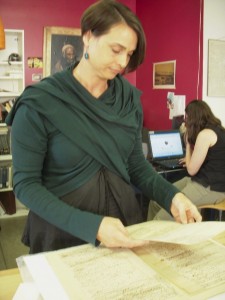
When I asked where everybody learned their conservation skills, Director O’Brien told me that Wintherthur has a course in conservation but that most people in the lab started as interns and learned on the job. O’Brien has an MFA in book arts from University of the Arts, and so was already specialized in books and the handling of paper when she came to the lab.
In addition to cleaning the documents, they often have to repair tears in the fragile papers. They use archival wheat paste for that job. “We cook it every day, with fresh boiling water,” said O’Brien. They buy the paste in Chinatown. “It’s really cheap…doesn’t change its state and is removable in water,” she said. As for the lack of white gloves on the lab workers hands, she said that during their lives these documents got plenty of handling by fingers, and basically they are sturdy enough to take a few gentle pawings while being cleaned.
In the digital laboratory, a Haselblad medium format digital camera makes the tif files of the documents (online the documents will be jpegs). They scan them high resolution, from 50MB to a couple hundred MB. One item they were very excited about was a 12 ft. scroll, which will be “stitched” together digitally page by page.
Preserving American Freedom is planned to debut online in February, 2013. You can visit the HSP digital library any day at their website.
More images at flickr.


